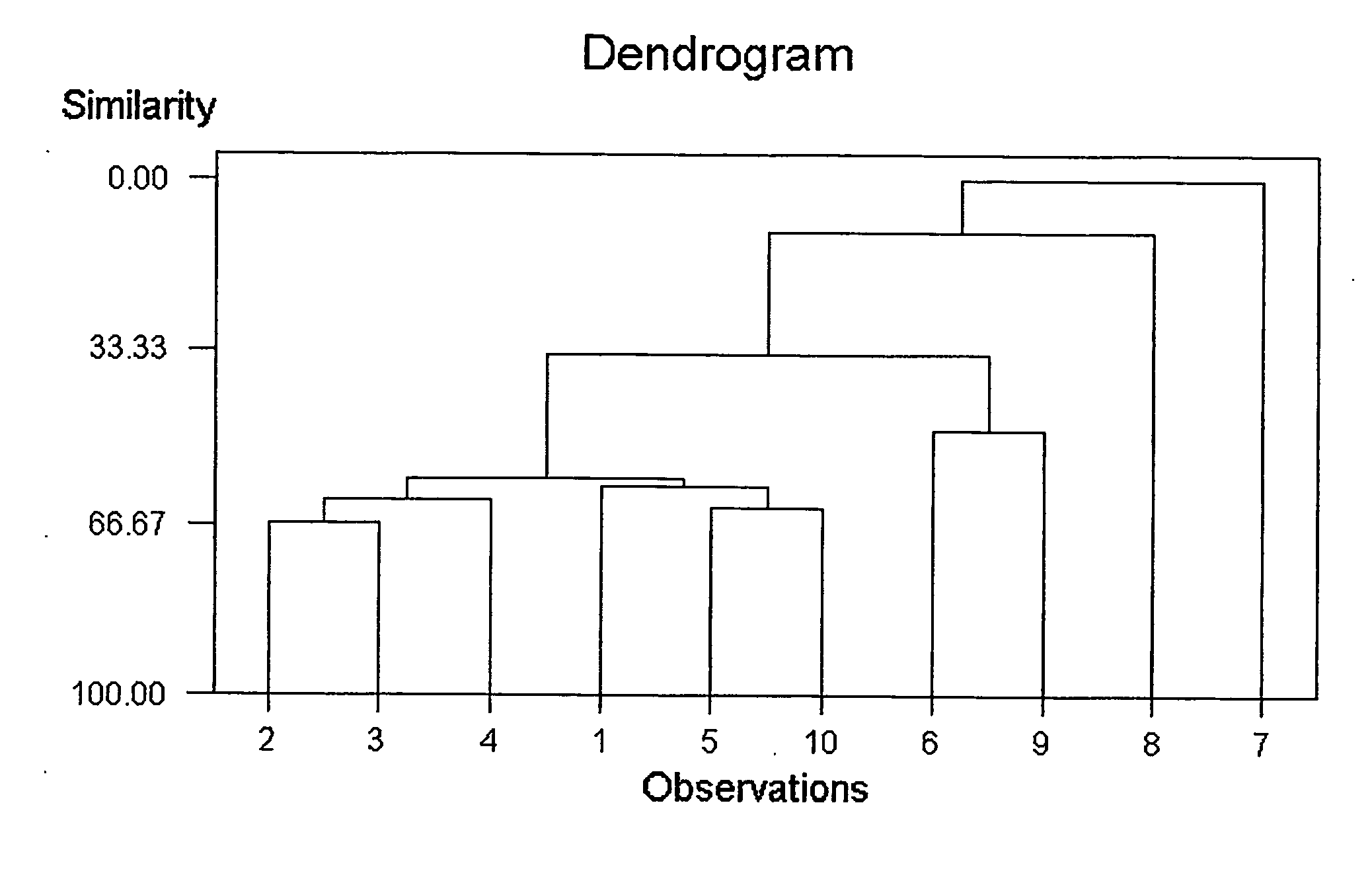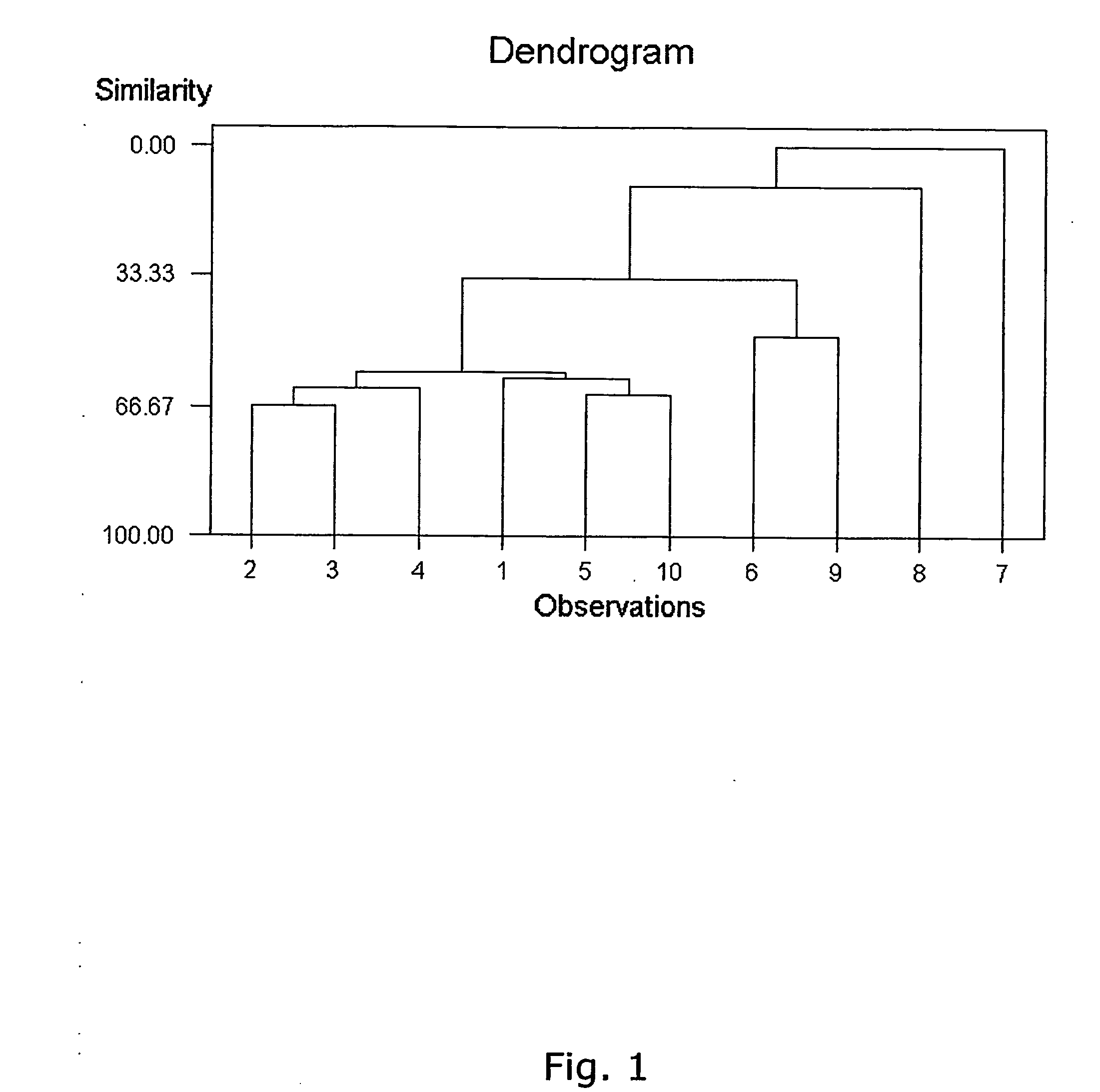Fish oils with an altered fatty acid profile, method of producing same and their use
a technology of altered fatty acid profiles and fish oils, which is applied in the direction of fatty oil/fat, fatty-oil/fat production, fatty substance production, etc., can solve the problems of low arachidonic acid levels of human milk replacement products, low activity of endogenous pufa synthesis, and inability to breast-feed infants
- Summary
- Abstract
- Description
- Claims
- Application Information
AI Technical Summary
Benefits of technology
Problems solved by technology
Method used
Image
Examples
example 1
Introduction
[0096] A feeding trial with cod (Gadus morhua) was performed to specifically alter the fatty acid composition of the liver lipids. Cod with an average weight of 2.2 kg were fed four experimental diets for 5 months. The relative amount of DHA (docosahexaenoic acid 22:6n-3), EPA (eicosapentaenoic acid, 20:5n-3) and ARA (arachidonic acid, 20:4n-6) in the feed varied from 8.7-23.8% (DHA), 5.6-15.5% (EPA) and 0.9-11.9% (ARA). After 5 months of feeding the amount of ARA in cod liver lipids increased from 0.4 to 4.5%, DHA increased from 14.2 to 20.6% when high levels of DHA were fed. The alteration in the amount of EPA was less than for both ARA and DHA, and a higher degree of conservation of DHA than EPA was observed.
Materials and Methods
[0097] Cod (Gadus morhua) with an average weight of 2.2 kg, was kept in 2×2×1 m indoor tanks at constant sea water temperature of 8° C., and fed four experimental diets. The diets consisted of fish meal, wheat and standard premixes of vit...
example 2
[0111] The objective of this study was to test whether sufficient information could be obtained so as to chemically differentiate among oil blends comprising microbial ARA (20:4n-6), tuna oil DHA (22:6n-3), South American fish oil (C20:5n-3 and 22:6n-3) and liver oils from cod fed with these blends.
Materials and Methods
Samples
[0112] In Example 1 Tuna fish oil (high in DHA), South American fish oil (high in EPA and DHA) and microbial ARA oil (high in ARA) were used in the cod feed. These oils, a blend between tuna oil and microbial ARA oil and liver oils from cod before and after feeding experimental diets were prepared for 13C NMR analysis. The different samples are described in Table 4 below. Sample 2 and sample 10 were taken from the same feeding groups after different feeding time with experimental diet.
TABLE 4Samples used for 13C-NMR analysisSample NoDescription1Liver oil from cod after 22 weeks feeding with anexperimental feed. Feed coated with a blend of SouthAmerican f...
PUM
| Property | Measurement | Unit |
|---|---|---|
| wt % | aaaaa | aaaaa |
| wt % | aaaaa | aaaaa |
| wt % | aaaaa | aaaaa |
Abstract
Description
Claims
Application Information
 Login to View More
Login to View More - R&D
- Intellectual Property
- Life Sciences
- Materials
- Tech Scout
- Unparalleled Data Quality
- Higher Quality Content
- 60% Fewer Hallucinations
Browse by: Latest US Patents, China's latest patents, Technical Efficacy Thesaurus, Application Domain, Technology Topic, Popular Technical Reports.
© 2025 PatSnap. All rights reserved.Legal|Privacy policy|Modern Slavery Act Transparency Statement|Sitemap|About US| Contact US: help@patsnap.com


